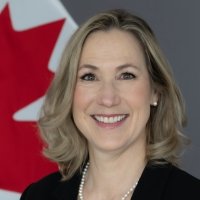The Comprehensive and Progressive Trans-Pacific Partnership: Implications for Global Trade
On March 8, representatives of eleven countries will meet in Chile to sign the Comprehensive and Progressive Trans-Pacific Partnership (CPTPP), creating a massive free trade bloc connecting 500 million people and economies with a combined GDP of over $10 trillion. Signatories include Australia, Brunei, Canada, Chile, Japan, Malaysia, Mexico, New Zealand, Peru, Singapore, and Vietnam.
The current agreement includes several major economies that will have a profound influence on the future of global trade and investment. The United States withdrew from negotiations in January 2017.
On March 7, the Wilson Center hosted in-depth panels discussions on the economic impact of the agreement for member and non-member countries and the future of integration of the Asia-Pacific region and the Western Hemisphere.
*Special Pre-Event Interviews: Shihoko Goto of the Asia Program and Laura Dawson of the Canada Institute discuss TPP, the global implications of the TPP’s resurrection, and the deal's importance to Asia and Canada, respectively.
Selected Quotes
Panel 1:
The Honorable Ashok Kumar Mirpuri
- “Singapore has 21 FTAs and each FTA builds on each other, so we will use TPP11 to further build on bringing the Asia-Pacific together.”
- “Trade became a very difficult topic to discuss in the U.S. in 2016. When the new administration in the U.S. withdrew from the TPP, it was of course a disappointment for all of the TPP countries. The balance of benefits in the TPP had changed.”
- “For Singapore, trade is 3.5 times our GDP. We have to be connected to the world, we need to be connected to the world.”
Katzutoshi Aikawa
- “Tomorrow marks a special day... It was not an easy path to come to where we are now, so we have ample reason to celebrate.”
- “The Japanese economy has struggled with a deflationary cycle for the last 20 years and we are faced with fundamental challenges, such as how to rev up the economic machine with the declining population… TPP would help us better deal with those challenges.”
- “Negotiating processes themselves are arduous and sometimes even tortuous. We’ve been through ups and downs.”
Kirsten Hillman
- “The CPTPP is designed to serve as an integrator – an integrator among the countries that are part of the agreement – and is designed to grow. And as it does, [it is designed to] increase this partnership and this regional bloc.”
- “The CPTPP provides us with access, preferences, and a stable trading environment with a number of very important, key trading partners in Asia. It also allows us to modernize and deepen our relationship with the three countries within the bloc that we already have FTAs with, which are Mexico, Chile, and Peru.”
- “The CPTPP is designed to reflect the values that we have as a group of countries. We have a chapter on SMEs [and] strong and enforceable chapters on labor and environment.”
- “The CPTPP has reaffirmed the importance of small businesses, the environment chapter, the labor chapter, corporate social responsibility, cultural identity, diversity, indigenous matters and rights, inclusiveness, the government’s right to regulate… These are all designed to be sure that our citizens understand that we are hearing what they say.”
Alberto Hart
- “Our focus is always on the benefits for the citizens and for the economic operators – the businesses, the small and medium enterprises, anyone that can benefit along the chain. One of the main objectives of the TPP for us was being able to insert ourselves in these global supply chains at what is becoming, or what is already, the center of global growth, the Asia-Pacific.”
- “One of the strengths of the CPTPP is that we’ve been able to take the package that’s already been agreed to… and to repackage it, maintaining its high standards, overall balance, integrity, and its firm commitment to open markets, and to advance regional economic integration.”
- “For [Peru], TPP is also part of a broader political and economic strategy of approximating to the Far East Asia region of the world that has been growing very quickly and that offers very important market opportunity for us.”
- “China is rising in terms of its economic clout. It’s one of the main, or the main, trading partner for many of the Asia-Pacific economies, and that includes Peru. But you have to always consider that not all trade is the same.”
Panel 2:
Mireya Solis
- “It shows that the U.S. is not indispensable. And it also shows that other countries can step up to the plate and provide leadership.”
- “The agreement remains true to its level of ambition: market access was preserved, the tariff elimination targets are going to stay on, and a surgical approach was taken in order to freeze just 22 provisions that could later on be activated if and when the U.S. comes back.”
- “Japan is very concerned about the vacuum that is being created by a disengaged US in the region, and the idea is to put on the table alternatives to regional integration that are not just China-centric.”
- “We are at a critical juncture… It seems that the appetite for reform for China has waned… I also worry that the U.S. may be turning inward, relying on unilateral trade remedies, and soon may impose very protectionist measures. The TPP11 is actually a good hedge against these two adverse trends, China’s mercantilism or U.S. protectionism.”
Jeffrey J. Schott
- “The absence of the U.S. means a smaller economic payoff from these reforms; the estimates of the potential real-income gains after the deal is fully implemented for the TPP11 are less than 50 percent of what they would be if the U.S. was in the deal. But it’s still substantial: almost $160 billion for the 11 countries.”
- “The TPP is a free-trade-agreement-upgrader.”
- “One of the benefits of negotiating TPP with Canada and Mexico in the group was that we had an automatic upgrade of NAFTA. Now we’re wrenchingly trying to reinvent the wheel in the NAFTA negotiations with some difficulty.”
- “Common sense and economic rationality prevailed in the TPP11. The leadership of Japan was matched by the courage of the other countries.”
Jorge Heine
- “Half the job is showing up. Well, in this case, the very fact that it will be signed tomorrow, it seems to me, is a very important thing.”
- “For Latin America, my own view is that the expansion of our ties with Asia is perhaps the most significant development we have seen in this century. You cannot imagine the difference that it has made for Chile, Peru, Brazil, Argentina – almost all of South America – to have the links that we have with Asia today.”
- “In the case of Chile, half of our exports go to Asia. You cannot underestimate the significance that it has. Transpacific trade is absolutely essential for us and we need to push for it more.”
Ambassador Anthony Wayne
- “Strategically, what this does is diversify [Mexico's] trading sources away from the United States, just as it does for Canada, and from a geostrategic-economic perspective, that’s a big step forward.”
- “[The TPP] is right in line with Mexico’s long-term policy, where it already has access to over 40 countries through its various free trade agreements.”
- “The TPP11 is still pretty popular in Mexico because it is seen as another place that Mexico can sell and trade and have other economic relationships.”
- “There’s going to be a sense of shared interest that will develop [among the member countries], which will be an interesting plus for all the members, including Mexico.”
Introduction

Moderators


Executive Director, Future Borders Coalition
Panelists


Former Career Ambassador to Afghanistan, Argentina, and Mexico; Distinguished Diplomat in Residence, School of International Service, American University

Research Professor, Boston University; Co-editor, FIXING HAITI : MINUSTAH AND BEYOND.
Hosted By

Latin America Program
The Wilson Center’s prestigious Latin America Program provides non-partisan expertise to a broad community of decision makers in the United States and Latin America on critical policy issues facing the Hemisphere. The Program provides insightful and actionable research for policymakers, private sector leaders, journalists, and public intellectuals in the United States and Latin America. To bridge the gap between scholarship and policy action, it fosters new inquiry, sponsors high-level public and private meetings among multiple stakeholders, and explores policy options to improve outcomes for citizens throughout the Americas. Drawing on the Wilson Center’s strength as the nation’s key non-partisan policy forum, the Program serves as a trusted source of analysis and a vital point of contact between the worlds of scholarship and action. Read more


Indo-Pacific Program
The Indo-Pacific Program promotes policy debate and intellectual discussions on US interests in the Asia-Pacific as well as political, economic, security, and social issues relating to the world’s most populous and economically dynamic region. Read more


Canada Institute
The mission of the Wilson Center's Canada Institute is to raise the level of knowledge of Canada in the United States, particularly within the Washington, DC policy community. Research projects, initiatives, podcasts, and publications cover contemporary Canada, US-Canadian relations, North American political economy, and Canada's global role as it intersects with US national interests. Read more


Mexico Institute
The Mexico Institute seeks to improve understanding, communication, and cooperation between Mexico and the United States by promoting original research, encouraging public discussion, and proposing policy options for enhancing the bilateral relationship. A binational Advisory Board, chaired by Luis Téllez and Earl Anthony Wayne, oversees the work of the Mexico Institute. Read more
